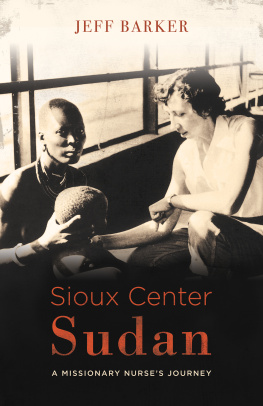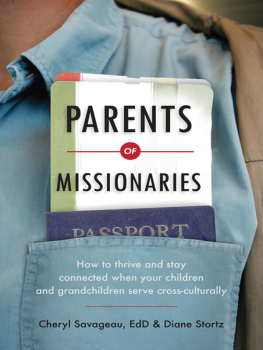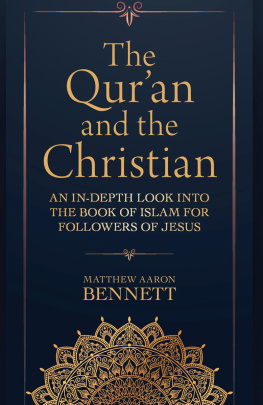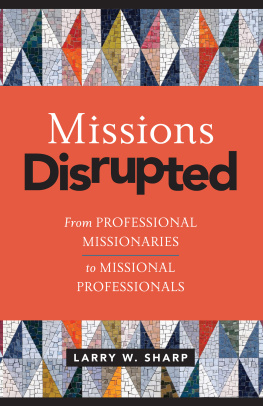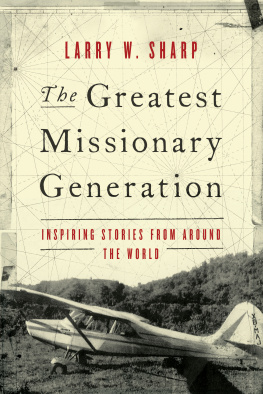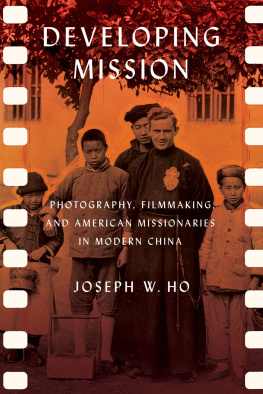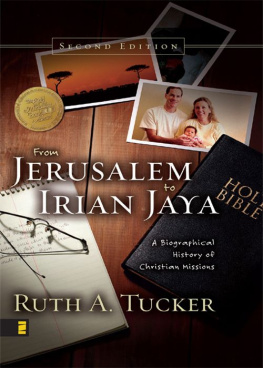THE ORPHAN SCANDAL
Christian Missionaries and the Rise of the Muslim Brotherhood
BETH BARON
STANFORD UNIVERSITY PRESS
STANFORD, CALIFORNIA
Stanford University Press
Stanford, California
2014 by the Board of Trustees of the Leland Stanford Junior University.
All rights reserved.
No part of this book may be reproduced or transmitted in any form or by any means, electronic or mechanical, including photocopying and recording, or in any information storage or retrieval system without the prior written permission of Stanford University Press.
Printed in the United States of America on acid-free, archival-quality paper
Library of Congress Cataloging-in-Publication Data
Baron, Beth, author.
The orphan scandal : Christian missionaries and the rise of the Muslim Brotherhood / Beth Baron.
pages cm
Includes bibliographical references and index.
ISBN 978-0-8047-9076-5 (cloth : alk. paper)ISBN 978-0-8047-9138-0 (pbk. : alk. paper)
1. MissionsEgyptHistory20th century. 2. Missions to MuslimsEgyptHistory20th century. 3. Jam'iyat al-Ikhwan al-Muslimin (Egypt)History. 4. OrphansServices forEgyptHistory20th century. 5. Public welfareEgyptHistory20th century. 6. IslamRelationsChristianityHistory20th century. 7. Christianity and other religionsIslamHistory20th century. I. Title.
BV 3570.B37 2014
266.00962dc23
2014007328
ISBN 978-0-8047-9222-6 (electronic)
Typeset by Bruce Lundquist in 10/15 Minion Pro
For Talya and Neta,
and all the Turkiyyas of the world
CONTENTS
PREFACE
One hot summer morning in June 1933, an orphan girl named Turkiyya Hasan failed to rise in a show of respect for a visiting Protestant missionary at the Swedish Salaam Mission School in Port Said, Egypt. The defiance of the fifteen-year-old Muslim girl infuriated the Swiss matron, who rebuked and then began caning her when she answered back. News quickly spread from the Mediterranean port city to Cairo that a matron of the School for Peace had beaten an orphan in an attempt to convert her to Christianity. The story fed into a stream of reports on conversions, or attempted conversions, touching a deep nerve among Egyptians and creating a national uproar with international repercussions. The scandal marked the beginning of the end of foreign missions in Egypt and the simultaneous take-off of Islamist organizations such as al-Ikhwan al-Muslimin (the Muslim Brotherhood).
The Orphan Scandal uses the Turkiyya Hasan affair in the summer of 1933 as a lens to examine the dynamic among Christian evangelicals, Islamists, and officials of the semi-colonial Egyptian state. It details the passionate efforts of American and European missionaries, many of whom were single women with little more than their faith to guide them, to look after orphaned and abandoned children. Their attempts to convert their wards aroused the concern of Muslim activists, for whom the beating of Turkiyya Hasan at the Swedish Salaam Mission served to communicate the need for Muslim social welfare to the wider public. In battling missionaries for the bodies and souls of Egypts children, Islamists appropriated evangelicals tools to fight them, and in the process created their own network of social welfare services. State officials viewed the expanding anti-missionary movement as a threat and moved to crush it by cutting off its ability to fundraise, to assemble, and to publicize its views. At the same time, the state tightened control over private social welfare institutions and extended its own, sowing the seeds of a Muslim welfare state.
Facilitated by the British occupation, Christian missions reached their
With a trail that winds through the Arabic press and leads in and out of different missionary and state archives, the Turkiyya Hasan affair allows us to read the histories of missionaries, Muslim Brothers, and the semi-colonial state together. This in turn gives a new perspective on the early years of the Muslim Brotherhood, beyond a stress on the Brotherhoods antagonistic relations with British colonial authorities or Egyptian state officials. Richard Mitchell, Brynjar Lia, and Gudrun Kraemer, have extensively researched this early history.The Orphan Scandal maps out the connections they have briefly noted between missionaries and the Muslim Brotherhood, taking us into the small cities, towns, and villages in Egypt where some of the most intense contests between evangelicals and Islamists occurred. Focusing on contact points, tracing struggles at particular moments, and identifying specific missionaries and missionssuch as the Swedish Salaam Mission or the Egypt General Missionbecomes critical in detailing these encounters.
This approach of concentrating on events in the Canal Zone and Upper Egypt (where an important missionary orphanage was founded) has the advantage of decentering Egyptian history.spotlight away from Hasan al-Banna, the Muslim Brotherhood founder and general guide, to illuminate the activities of branch members in places such as al-Manzala, Port Said, and Suez.
This book also shows semi-colonialism in action. What did it mean for Egypt to be independent and yet have British army bases and British police commanders and advisors working for the Egyptian government? How did this work out in practice, where did power lie, and who made the important decisions? Calling this period in Egyptian history a failed liberal experiment and putting the blame on Egyptian politicians ignores the extent to which Egyptians were constrained in their actions. This chapter of British imperial history has not gotten the attention it deserves, at least lately, perhaps because Egypts status was so unique: it was not a formal colony like India nor a mandate like Palestine nor even a protectorate, as it had been during World War I. The manipulations of Sir Alexander Keown-Boyd, British advisor in the Egyptian Ministry of Interior, in the course of the orphan scandal reveal the complexities of semi-colonialism. Pushed by Keown-Boyd, Egyptian officials moved to suppress a peaceful protest movement against missionaries, which in the long term only fueled the Islamist opposition.
Under the watchful eyes of the British and protected by the Capitulations, Protestant missionaries found great liberty to proselytize in Egypt from the time of the occupation in 1882. Yet the armies of European and American evangelicals that descended on the Nile Valley had to do more than preach in order to reach the population. To win converts, they opened schools, clinics, hospitals, and orphanages, and sent Bible women into the homes of Egyptians to read the gospel to illiterate girls and women. A few came over unaffiliated with a church or board, but most came with missions. The largest of these was the American (Presbyterian) Mission, whose converts launched the Egyptian Evangelical Church. They had plenty of company in, among others, the Nile Valley Mission, the Assemblies of God Mission, the Church Missionary Society, the Egypt General Mission, and the Swedish Salaam Mission, all of which are discussed here.
Scholars have only recently started to explore this critical chapter of American and European forays in Egypt, with Heather Sharkey and Paul Sedra leading the way.In discussing some of the larger missions, including the American Mission and the Egypt General Mission, this book pays particular attention to Pentecostal and other evangelicals from non-mainline churches. Their brand of muscular Christianity, aggressive proselytizing, and attempts to convert Muslims often got them into trouble with locals and state authorities.
What did conversion mean in a semi-colonial context and in sites where power was unequal on multiple levels, such as an orphanage or school? Did these encounters constitute conversations, that is, dialogues between evangelists and locals, or between adults and children, as some have theorized? Or were they part of a regime of coercion, that is, where undue pressure or excessive force was designed to force transformation? The answer may well lie in the distinctions between the notion of religion as belief, which cannot be forced, and of religion as a set of practices, which can be prescribed. Christian missionaries stressed belief and faith; Muslims saw practice as central. There is also a third possibility, that religious conversion meant not just a shift in belief or practice but in legal identity. At what age could this occur, who counted the years, and what constituted force? These all became critical questions in contestations over conversion.
Next page

